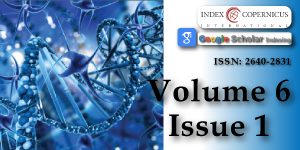In silico disrupting quorum sensing of porphyromonas gingivalis via essential oils and coumarin derivatives
Main Article Content
Abstract
The emergence of porphyromonas gingivalis biofilm is a hallmark of risky burden diseases including Alzheimer's disease and atherosclerosis. The current study aims to screen some natural essential oil compounds and coumarin derivatives to interfere with quorum sensing of the bacterium and thus biofilm formation. A total of 20 ligands (10 essential oil molecules and 10 coumarin derivatives) were docked to P.gingivalis heme-binding protein HmuY using UCSF Chimera built-in AutoDock interface. Alongside, ADMET properties were also predicted via ADMETsar 2.0 and ProTox-II webservers. All of the selected ligands had higher free energy values than the reference inhibitor MES and native coumarin as well. Moreover, ADME parameters are in good agreement with Lipinski's rule of five. Nevertheless, the best molecules with top binding energy exhibited slight immunogenicity as well as carcinogenicity issues requiring in vitro confirmation. In conclusion, the tested ligands had better efficacy against P.gingivalis quorum sensing and biofilm.
Article Details
Copyright (c) 2022 Al-Madhagi HA, et al.

This work is licensed under a Creative Commons Attribution 4.0 International License.
Bowen WH, Burne RA, Wu H, Koo H. Oral Biofilms: Pathogens, Matrix, and Polymicrobial Interactions in Microenvironments. Trends Microbiol. 2018 Mar;26(3):229-242. doi: 10.1016/j.tim.2017.09.008. Epub 2017 Oct 30. PMID: 29097091; PMCID: PMC5834367.
Rath S, Bal SCB, Dubey D. Oral Biofilm: Development Mechanism, Multidrug Resistance, and Their Effective Management with Novel Techniques. Rambam Maimonides Med J. 2021 Jan 19;12(1):e0004. doi: 10.5041/RMMJ.10428. PMID: 33478627; PMCID: PMC7835112.
Socransky SS, Haffajee AD. Periodontal microbial ecology. Periodontol 2000. 2005;38:135-87. doi: 10.1111/j.1600-0757.2005.00107.x. PMID: 15853940.
Kolenbrander PE, Palmer RJ Jr, Periasamy S, Jakubovics NS. Oral multispecies biofilm development and the key role of cell-cell distance. Nat Rev Microbiol. 2010 Jul;8(7):471-80. doi: 10.1038/nrmicro2381. PMID: 20514044.
Kanagasingam S, Chukkapalli SS, Welbury R, Singhrao SK. Porphyromonas gingivalis is a Strong Risk Factor for Alzheimer's Disease. J Alzheimers Dis Rep. 2020 Dec 14;4(1):501-511. doi: 10.3233/ADR-200250. PMID: 33532698; PMCID: PMC7835991.
Zhang J, Xie M, Huang X, Chen G, Yin Y, Lu X, Feng G, Yu R, Chen L. The Effects of porphyromonas gingivalis on Atherosclerosis-Related Cells. Front Immunol. 2021 Dec 23;12:766560. doi: 10.3389/fimmu.2021.766560. PMID: 35003080; PMCID: PMC8734595.
Zhou Y, Luo GH. porphyromonas gingivalis and digestive system cancers. World J Clin Cases. 2019 Apr 6;7(7):819-829. doi: 10.12998/wjcc.v7.i7.819. PMID: 31024953; PMCID: PMC6473131.
Jia L, Han N, Du J, Guo L, Luo Z, Liu Y. Pathogenesis of Important Virulence Factors of porphyromonas gingivalis via Toll-Like Receptors. Front Cell Infect Microbiol. 2019 Jul 18;9:262. doi: 10.3389/fcimb.2019.00262. PMID: 31380305; PMCID: PMC6657652.
Berger D, Rakhamimova A, Pollack A, Loewy Z. Oral Biofilms: Development, Control, and Analysis. High Throughput. 2018 Aug 31;7(3):24. doi: 10.3390/ht7030024. PMID: 30200379; PMCID: PMC6163956.
Li XH, Lee JH. Antibiofilm agents: A new perspective for antimicrobial strategy. J Microbiol. 2017 Oct;55(10):753-766. doi: 10.1007/s12275-017-7274-x. Epub 2017 Sep 28. PMID: 28956348.
Lu L, Hu W, Tian Z, Yuan D, Yi G, Zhou Y, Cheng Q, Zhu J, Li M. Developing natural products as potential anti-biofilm agents. Chin Med. 2019 Mar 20;14:11. doi: 10.1186/s13020-019-0232-2. PMID: 30936939; PMCID: PMC6425673.
He Z, Jiang W, Jiang Y, Dong J, Song Z, Xu J, Zhou W. Anti-biofilm activities of coumarin as quorum sensing inhibitor for Porphyromonas gingivalis. J Oral Microbiol. 2022 Mar 29;14(1):2055523. doi: 10.1080/20002297.2022.2055523. PMID: 35368854; PMCID: PMC8967191.
Bielecki M, Antonyuk S, Strange RW, Smalley JW, Mackiewicz P, Śmiga M, Stępień P, Olczak M, Olczak T. Tannerella forsythia Tfo belongs to porphyromonas gingivalis HmuY-like family of proteins but differs in heme-binding properties. Biosci Rep. 2018 Oct 22;38(5):BSR20181325. doi: 10.1042/BSR20181325. PMID: 30266745; PMCID: PMC6200708.
O'Boyle NM, Banck M, James CA, Morley C, Vandermeersch T, Hutchison GR. Open Babel: An open chemical toolbox. J Cheminform. 2011 Oct 7;3:33. doi: 10.1186/1758-2946-3-33. PMID: 21982300; PMCID: PMC3198950.
Hançer Aydemir D, Çifci G, Aviyente V, Boşgelmez-Tinaz G. Quorum-sensing inhibitor potential of trans-anethole aganist Pseudomonas aeruginosa. J Appl Microbiol. 2018 Sep;125(3):731-739. doi: 10.1111/jam.13892. Epub 2018 Jun 26. PMID: 29694695.
Zhang Y, Kong J, Xie Y, Guo Y, Cheng Y, Qian H, et al. Essential oil components inhibit biofilm formation in Erwinia carotovora and Pseudomonas fluorescens via anti-quorum sensing activity. LWT 2018; 92: 133-139. https://doi.org/10.1016/j.lwt.2018.02.027.
Szabó MA, Varga GZ, Hohmann J, Schelz Z, Szegedi E, Amaral L, Molnár J. Inhibition of quorum-sensing signals by essential oils. Phytother Res. 2010 May;24(5):782-6. doi: 10.1002/ptr.3010. PMID: 19827025.
Butt SS, Badshah Y, Shabbir M, Rafiq M. Molecular docking using chimera and autodock vina software for nonbioinformaticians. JMIR Bioinformatics and Biotechnology. 2020; 1:e14232.
Li Q, Shah S. Structure-based virtual screening. Protein Bioinformatics, Springer; 2017; 111-124.
DeLano WL. Pymol: An open-source molecular graphics tool. CCP4 Newsl Protein Crystallogr 2002; 40: 82-92.
Schöning-Stierand K, Diedrich K, Fährrolfes R, Flachsenberg F, Meyder A, Nittinger E, Steinegger R, Rarey M. Proteinsplus: interactive analysis of protein-ligand binding interfaces. Nucleic Acids Res. 2020 Jul 2;48(W1):W48-W53. doi: 10.1093/nar/gkaa235. PMID: 32297936; PMCID: PMC7319454.
Yang H, Lou C, Sun L, Li J, Cai Y, Wang Z, Li W, Liu G, Tang Y. admetSAR 2.0: web-service for prediction and optimization of chemical ADMET properties. Bioinformatics. 2019 Mar 15;35(6):1067-1069. doi: 10.1093/bioinformatics/bty707. PMID: 30165565.
Banerjee P, Eckert AO, Schrey AK, Preissner R. ProTox-II: a webserver for the prediction of toxicity of chemicals. Nucleic Acids Res. 2018 Jul 2;46(W1):W257-W263. doi: 10.1093/nar/gky318. PMID: 29718510; PMCID: PMC6031011.
Sharma D, Misba L, Khan AU. Antibiotics versus biofilm: an emerging battleground in microbial communities. Antimicrob Resist Infect Control. 2019 May 16;8:76. doi: 10.1186/s13756-019-0533-3. PMID: 31131107; PMCID: PMC6524306.
Olsen I. porphyromonas gingivalis-Induced Neuroinflammation in Alzheimer's Disease. Front Neurosci. 2021 Oct 14;15:691016. doi: 10.3389/fnins.2021.691016. PMID: 34720846; PMCID: PMC8551391.

